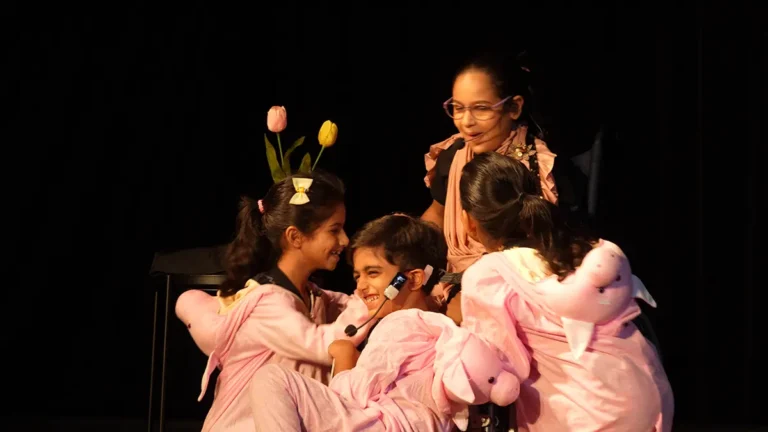In a world dominated by screens—smartphones, tablets, and televisions—children are increasingly engaging with media rather than each other. While technology has its benefits, the reliance on screens can stifle essential skills like critical thinking, creativity, and emotional intelligence. One effective solution to this growing concern is drama. Engaging children in theatrical activities not only transports them from the passive experience of watching to the active role of participating but also cultivates critical thinking in myriad ways.
The Importance of Critical Thinking
Critical thinking is the ability to analyze information, question assumptions, and make reasoned judgments. It’s an essential skill that lays the foundation for problem-solving, creativity, and informed decision-making. In an era where misinformation is rampant and quick judgments can lead to misunderstandings, fostering critical thinking in children has never been more crucial.
The Role of Drama
Drama is a powerful educational tool that can promote critical thinking. When children participate in drama, they step into the shoes of different characters, navigate various situations, and explore complex emotions. This active engagement requires them to think critically about the motivations of others, the implications of their actions, and the broader context of their choices. Here are several ways drama fosters critical thinking in kids:
1. Perspective-Taking
In drama, children are often required to embody characters who have different backgrounds, motivations, and perspectives. This process encourages them to think beyond their own experiences and consider how others might feel or react in a given situation. For instance, when portraying a character from a different culture or with distinct life experiences, children must analyze and interpret that character’s choices and emotions. This fosters empathy and enhances their ability to view situations from multiple angles—an essential aspect of critical thinking.
2. Problem-Solving
The nature of drama is inherently problem-focused. Whether it’s a conflict within a scene or a challenge in creating a production, children are consistently faced with problems that require creative solutions. For example, during a rehearsal, a child might need to determine how to portray a character’s anger effectively without resorting to stereotypes. This process involves critical evaluation of different approaches, weighing pros and cons, and ultimately making choices that enhance the storytelling experience.
3. Collaboration and Communication
Drama often involves teamwork, requiring children to collaborate with peers to create a cohesive performance. This collaboration necessitates clear communication, active listening, and respect for others’ ideas—all of which are vital components of critical thinking. By working together, children learn to negotiate differences, build consensus, and critically assess their contributions to the group effort. This collective process fosters a deeper understanding of how diverse viewpoints can lead to richer, more nuanced outcomes.
4. Reflective Thinking
In drama, reflection is a key component of the learning process. After rehearsals or performances, discussions about what went well and what could be improved are crucial. This reflective practice encourages children to analyze their performances critically, consider feedback from peers and teachers, and develop strategies for improvement. By engaging in this cycle of reflection, they hone their ability to assess situations, draw conclusions, and implement changes—skills that are transferable to academic and real-world scenarios.
5. Creativity and Imagination
Critical thinking and creativity are intertwined. Drama provides a unique platform for children to express themselves imaginatively while engaging in critical analysis. As they create characters, develop plots, and devise staging, they must think critically about how to convey their ideas effectively. This creative problem-solving enhances their ability to generate innovative solutions and approach challenges with an open mind—qualities that are invaluable in today’s fast-paced world.
Practical Applications
Integrating drama into educational settings can take many forms, from structured drama classes to informal role-playing exercises. Here are a few practical strategies for educators and parents to consider:
- Improvisation Games: Engaging children in improv exercises encourages spontaneous thinking and quick decision-making. These activities push them to respond creatively to unexpected situations, honing their critical thinking skills.
- Role-Playing Scenarios: Creating role-playing scenarios based on real-life situations can help children explore different viewpoints. This technique is particularly effective in teaching conflict resolution and empathy.
- Themed Storytelling: Incorporating drama into storytelling by having children act out different endings or perspectives can deepen their understanding of narrative structure and character development.
- Reflection Circles: After drama activities, hold reflection sessions where children can discuss what they learned and how they felt during the process. This encourages self-assessment and critical reflection.
Conclusion
As we navigate an increasingly screen-centric world, finding ways to cultivate critical thinking in children is vital for their development. Drama serves as a dynamic platform that not only engages kids but also empowers them with essential skills for the future. By moving from screen to scene, children can explore, analyze, and create—transforming passive consumers of content into active, thoughtful participants in their own stories. As educators, parents, and community leaders, embracing the power of drama can lead to richer educational experiences and a generation of critical thinkers ready to tackle the challenges of tomorrow.

